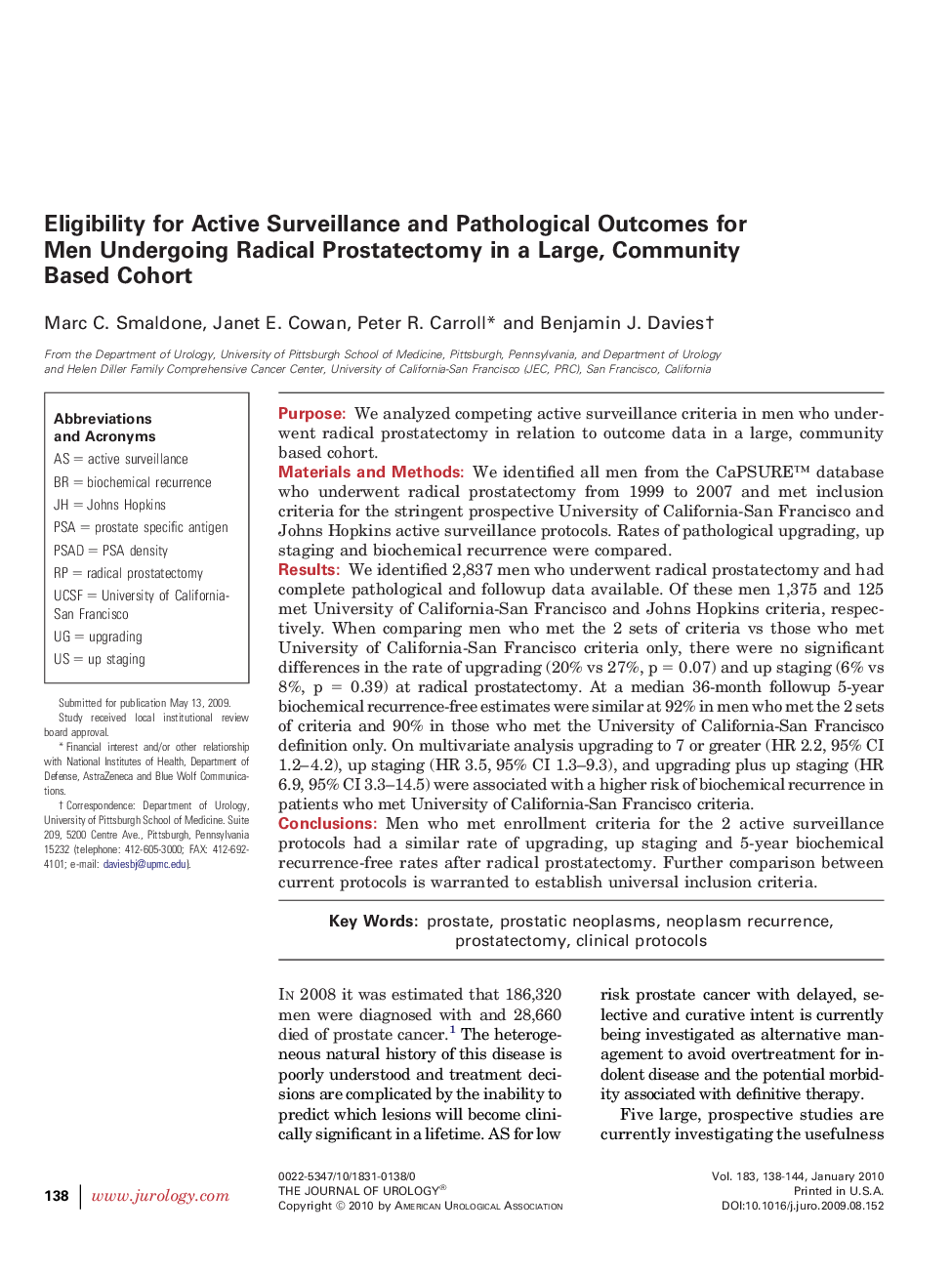| Article ID | Journal | Published Year | Pages | File Type |
|---|---|---|---|---|
| 3870867 | The Journal of Urology | 2010 | 7 Pages |
PurposeWe analyzed competing active surveillance criteria in men who underwent radical prostatectomy in relation to outcome data in a large, community based cohort.Materials and MethodsWe identified all men from the CaPSURE™ database who underwent radical prostatectomy from 1999 to 2007 and met inclusion criteria for the stringent prospective University of California-San Francisco and Johns Hopkins active surveillance protocols. Rates of pathological upgrading, up staging and biochemical recurrence were compared.ResultsWe identified 2,837 men who underwent radical prostatectomy and had complete pathological and followup data available. Of these men 1,375 and 125 met University of California-San Francisco and Johns Hopkins criteria, respectively. When comparing men who met the 2 sets of criteria vs those who met University of California-San Francisco criteria only, there were no significant differences in the rate of upgrading (20% vs 27%, p = 0.07) and up staging (6% vs 8%, p = 0.39) at radical prostatectomy. At a median 36-month followup 5-year biochemical recurrence-free estimates were similar at 92% in men who met the 2 sets of criteria and 90% in those who met the University of California-San Francisco definition only. On multivariate analysis upgrading to 7 or greater (HR 2.2, 95% CI 1.2–4.2), up staging (HR 3.5, 95% CI 1.3–9.3), and upgrading plus up staging (HR 6.9, 95% CI 3.3–14.5) were associated with a higher risk of biochemical recurrence in patients who met University of California-San Francisco criteria.ConclusionsMen who met enrollment criteria for the 2 active surveillance protocols had a similar rate of upgrading, up staging and 5-year biochemical recurrence-free rates after radical prostatectomy. Further comparison between current protocols is warranted to establish universal inclusion criteria.
